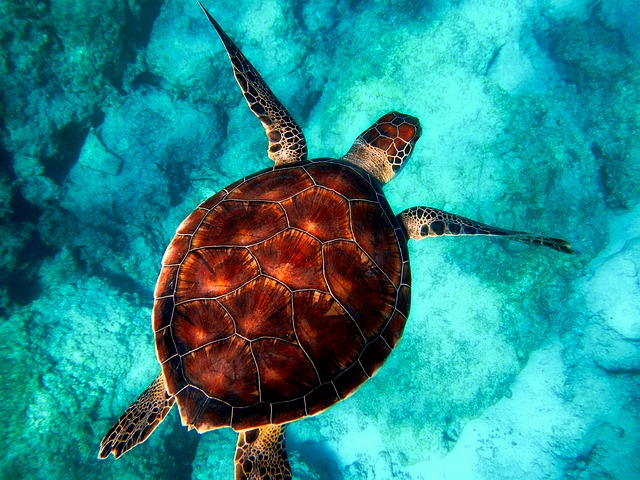Sea Turtle Facts
Below are some of the facts about sea turtles:
- Sea turtles originated long ago, and are one of the most ancient creatures still alive on earth. They existed 110 million years ago too, at the time dinosaurs existed and there are 7 species of sea turtles at present.
- The carapace is the shell of the turtles. Their carapace is shaped in a streamline to reduce friction with water as they swim around.
- The sea turtles cannot get their limbs and head inside their protective shell like other species of turtles can do.
- The sea turtles are found in mainly three colors, and they are yellow, black and green.
- The diet of sea turtles depend on what subspecies they are. But some food items are common. They are, seaweeds, algae, sponges, mollusks, shrimps, crabs and jellyfish.
- For the purpose of scientific researches, tracking of animals are done. But sea turtles cannot be tracked because the male and baby sea turtles once hatched from eggs, go for the sea, and never returns back to the shore. That is why the exact number or population of them cannot be counted.
- The sea turtles migrates a lot of distance between their feeding ground and nesting ground. They may migrate as much as 1400 miles.
- The turtles are found in temperate and warm waters throughout the world.
- Sea turtles return to the same nesting ground every time. The female turtle comes to the ground, digs a hole in the sand, and lays in it and returns to the sea. When the eggs hatch the hatchlings take time of up to a week to dig out of that pit in sand to come to the surface. Then they move towards the sea water and gets swept off to the ocean by waves.
- The sea turtles emerge out at night, and lives a solitary life until the breeding period comes and it looks for a mate.
- The sex of the hatchling coming from the egg of a sea turtle depends on the temperature of the sand where the mother nested. If the temperature is above 30ºC then then the juvenile turtle is a female. Otherwise eggs hatching below 30ºC makes male turtles.
- A batch of eggs laid by the sea turtle is called a clutch. Varying from species to species, a clutch may contain 70 to 190 eggs.
- Not all the juvenile turtles hatching out of the eggs survive. Many gets to the sea and many don’t. The ones that get to the sea have chances to survive. Only a few of them actually survives to adulthood.
